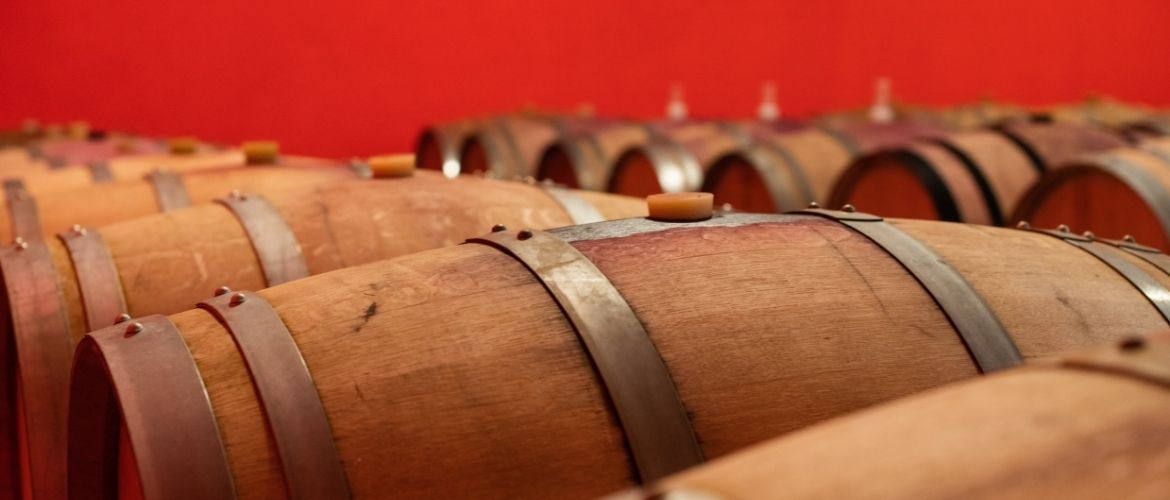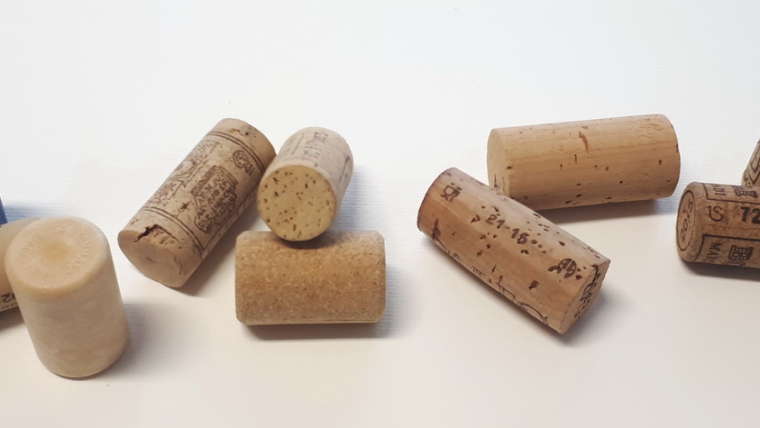We are carrying out the decanting of wines harvested in 2021 in barriques
Here is a study on the procedures in the cellar and the possible choices for ageing.
For our red wine DOC Bolgheri Agapanto, we decided an ageing of 12 months in medium-roasted fine-grained French oak barriques of second passage. We will try to explain our choices.
Refining begins with pouring
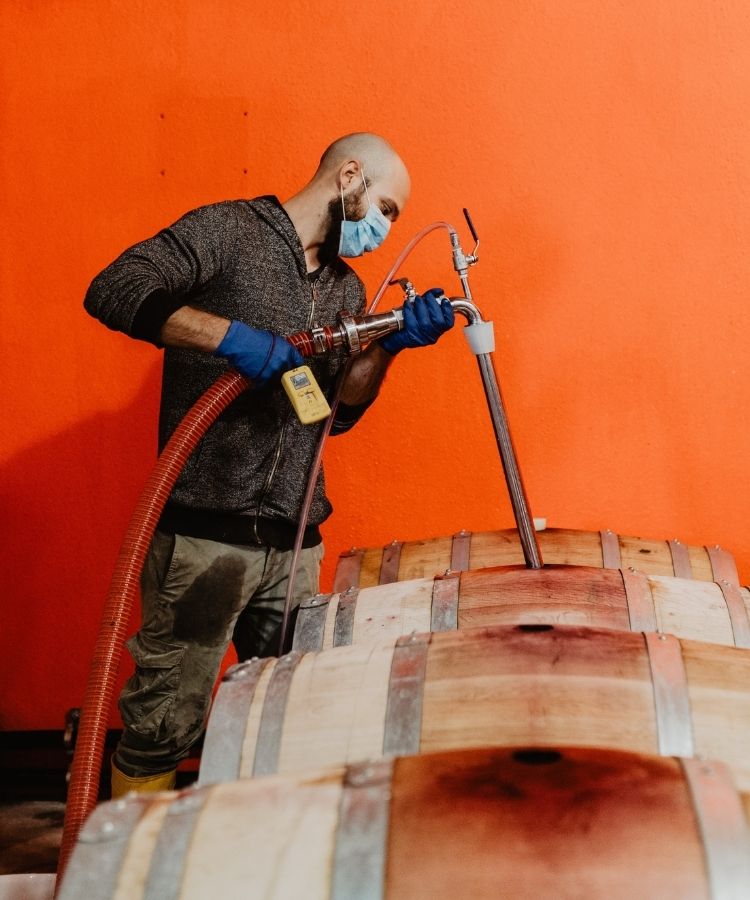
Every November we pour the wine of the previous vintage from the wooden containers, where it was aged, into those of steel, combining the vine varieties from the different barrels to create the blend decided for the current year.
Then we wash the containers and fill them again with the new wine, keeping separated wines and plots, so that each can follow its own path of ageing until November of the following year, when they will be added to the blend.
We tried to differentiate the woods of barriques and tonneaux to bring more complexity to the wine. What all that means?
What are barriques and tonneaux
The barriques are oakwood containers, plants of the genus Quercus, of the capacity of 225 litres, or exactly 300 bottles of 0.75 litres, commonly used in France for the ageing and transport of wine since the Middle Ages.
The difference between tonneaux and barriques is due to their higher capacity, offering with the same volume, a lower surface area in contact with wine. The interaction between wine and wood will be less incisive, therefore the aroma released in the mouth and the nose will be less.
For the Ciliegiolo of our Agapanto we have chosen 500-litre tonneaux, but there are various weights, from 400 to 700 litres.
The wood choice
Moreover, we must choose the wood of the barrels.
Indeed, oakwood can come from forests located in different Countries and continents.
That means that, depending on the climatic conditions where the plants grew, the wood will be more or less fine-grained and have a variable permeability to oxygen.
Fine-grained wood is the best for wines, above all for long rest in barrels every size, whilst coarse-grained barrels are ideal for ageing whiskeys and liquors.
Wood seasoning
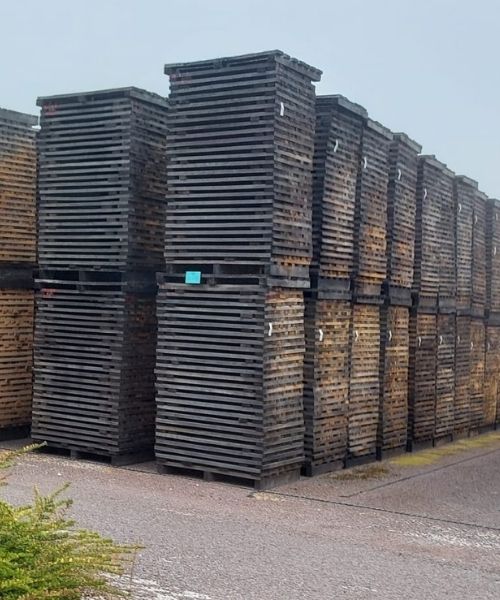
Once chosen the type of oak, it is seasoned: the oak logs are cut into boards that are aged from 2 to 5 years in the open air to allow atmospheric agents treating the wood and its tannins, removing the bitterest and most unpleasant ones.
Tannins
The woody parts of plants are rich in tannins, polyphenolic compounds with different properties; the most interesting as regards wines are the protective action against oxidation and bitterness and the astringent feeling that they can give.
The tannins we find in wine are due to the stalks and the pips, therefore to the grape itself or to the ageing of wood.
To have fewer astringent tannins from grapes, we must evaluate its taste when they are ripening on the plant: the more the grape is ripe, the softer and silkier are tannins.
Instead, the tannins due to wood seasoning depend on the type of tree chosen, the seasoning of boards and the roasting of the wood itself.
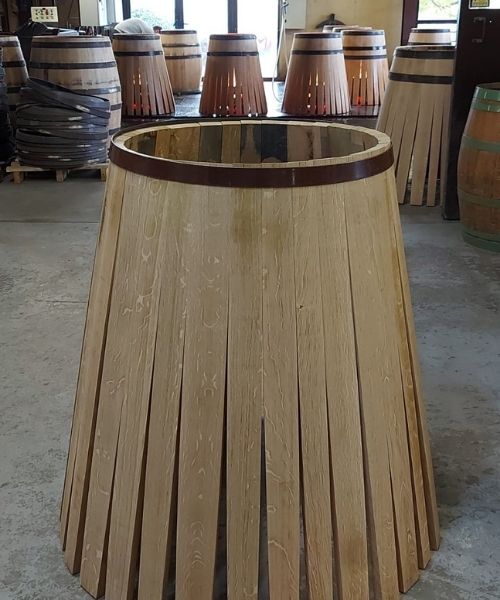
After seasoning, man cut the boards into slats, the right size to shape barriques or tonneaux.
Later they are assembled in the circular shape of traditional barrels, fixing iron circles at the ends, but without closing them with lids.
The barrels are then placed vertically around a brazier with high heat. The warmth of the fire inside makes the wood soft and makes it easier for the slats to bend, so other circles can be added to complete the shape.
Now we can start the fundamental part of the entire process:
Roasting
Now the barriques are moved to another brazier on lower heat. The intensity of heat and the duration of this process will produce several types of roasting. At this point, the polyphenols of wood are modified producing the aromas we will feel in the wine, such as those of vanilla, coconut, coffee, spices, or leather.
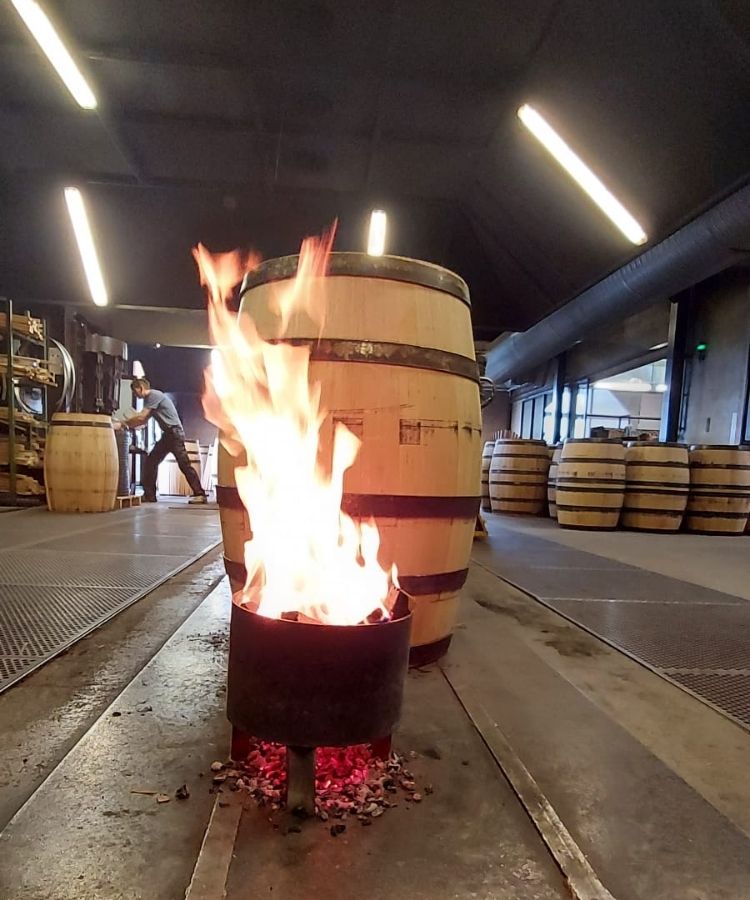
A high-heat roasting is the best to age the wine in wood; in this case the most superficial layers of wood are cauterised by fire and the wine will need more time to penetrate the most profound layers and find its right balance with polyphenols.
Low-roasted wine releases quickly its aroma, therefore, when tasted after few weeks from the rest in barriques, it can have a too high influence on the wine.
We must wait for a rather long time, from some months to some years, to achieve the perfect balance between the aromas of wood and wine..
During this ageing time, the wine must be tasted from time to time to find the ideal time to stop its passage in wood.
The time of “settling” the wine after being removed from barriques and bottled must be considered: it is called ageing “in glass”, when a new balance between aroma and taste of the wine is set.
Ageing is a complex and beautiful procedure, which allows the producer selecting among many variables to achieve the desired wine.
For example, the choice of the supplying cooperages.
Each of them, notwithstanding with similar features, has a unique procedure to work woods, different from the others.
Moreover, the choices of wood, ageing, roasting and duration of the rest in barriques depend on, and above all, from the vine variety used.
But the most important variables to choose ageing is the sensitiveness of the producer and his winemaker that will together choose the imprint and trend to give to the wines, making them personalised and unique.
by Silvia Cirri and Linda Franceschi

